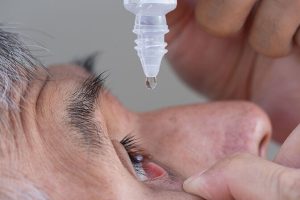In the realm of eye health, numerous terms and conditions are often thrown around, causing confusion and concern for many. One such term that frequently emerges is vitreous degeneration. But what is vitreous degeneration, and why should you be aware of it? Let’s delve deeper into this topic.
At Retina & Vitreous of Louisiana, we take your eye health seriously. Our expert team of retina specialists can help with experienced care and cutting-edge technology. Learn more about our services and call us at 225-768-8833 to schedule an appointment.
What is Vitreous Degeneration? A Simple Definition
The vitreous is a clear, jelly-like substance that fills the space between the lens and the retina in our eyes. As we age, this gel can undergo changes, leading to what is known as vitreous degeneration. Essentially, vitreous degeneration refers to the natural age-related changes that occur within this gel, often leading to it becoming more liquid.
The Process of Vitreous Degeneration
When we dive deeper into the question, “What is vitreous degeneration?” it becomes evident that understanding the process is crucial. The vitreous, which begins as a thick and consistent gel in our youth, undergoes various changes as we age.

- Liquefaction: One of the primary changes is liquefaction. The vitreous gel contains a network of collagen fibers suspended in a liquid. As we age, the gel starts to break down, and more vitreous becomes liquid. This consistency change can lead to liquid pockets forming within the more solid gel.
- Collagen Fiber Clumping: As the vitreous liquefies, the collagen fibers within it can clump together. These clumps become the floaters many people notice as tiny specks or strings drifting in their vision.
- Vitreous Shrinkage: Over time, the vitreous gel also shrinks. As it does, it can pull away from the retina, leading to posterior vitreous detachment (PVD). This detachment is a common phenomenon of vitreous degeneration, but it can occasionally lead to more severe conditions like retinal tears if the vitreous is strongly adhered to the retina.
- Vitreous Syneresis: This term refers to the process wherein the vitreous body contracts, creating pockets of liquid and spaces within the vitreous chamber. Syneresis can further intensify the appearance of floaters.
- Natural Attachment Points: The vitreous has natural attachment points to the retina, particularly around the optic nerve and the macula. These attachment points can experience additional strain as vitreous degeneration progresses, leading to potential complications.
Understanding the intricate processes that answer “What is vitreous degeneration?” provides insights into the importance of regular eye check-ups. These transformations, although natural, warrant attention due to their potential implications on overall eye health.
Symptoms of Vitreous Degeneration
For many individuals, the primary question after “What is vitreous degeneration?” is “How will it affect me?” The symptoms can vary, but commonly include:
- Floaters: Small specks or clouds that move in your field of vision. These are essentially the shadows cast by the condensing vitreous or the tiny clumps formed within it.
- Flashes: Brief flashes of light, especially noticeable when looking towards a dark background.
- Reduced Visual Acuity: In rare cases, vitreous degeneration can reduce the sharpness of vision.

It’s essential to note that while these symptoms can indicate vitreous degeneration, they can also point to other, more severe eye conditions. If you experience a sudden increase in floaters, flashes, or any change in vision, it’s crucial to consult a retina specialist immediately.
[Related: What is A Retina Specialist?]
Treatment and Management
Now that we’ve tackled the question, “What is vitreous degeneration?” the next logical question is, “How is it treated?” In most cases, vitreous degeneration does not require specific treatment. The floaters may remain but usually become less bothersome over time. However, if the symptoms are particularly disruptive or complications like retinal tears appear, treatments might be necessary. These could include:
- Laser therapy: To address any retinal tears or holes that may develop.
- Vitrectomy: A surgical procedure to remove and replace the vitreous with a saline solution. This is usually reserved for severe cases.
What is Vitreous Degeneration? Prevention and Early Detection
While vitreous degeneration is primarily age-related and can’t be entirely prevented, regular eye check-ups can lead to early detection, ensuring any complications are addressed promptly. Maintaining good overall health, protecting your eyes from injuries, and being aware of any changes in your vision can also play a pivotal role.
Retina & Vitreous of Louisiana Can Help You with Vitreous Degeneration
In understanding “What is vitreous degeneration?”, we realize that it’s a natural aging process of the eye. While it may not pose significant threats to most, being informed about its symptoms, potential complications, and treatments is essential.
At Retina & Vitreous of Louisiana, we’re always here to address your concerns and ensure your eyes remain in optimal health. If you or a loved one suffers from a sudden loss of vision or another eye-related issue, reach out to our office to schedule an appointment by calling 225-768-8833.


